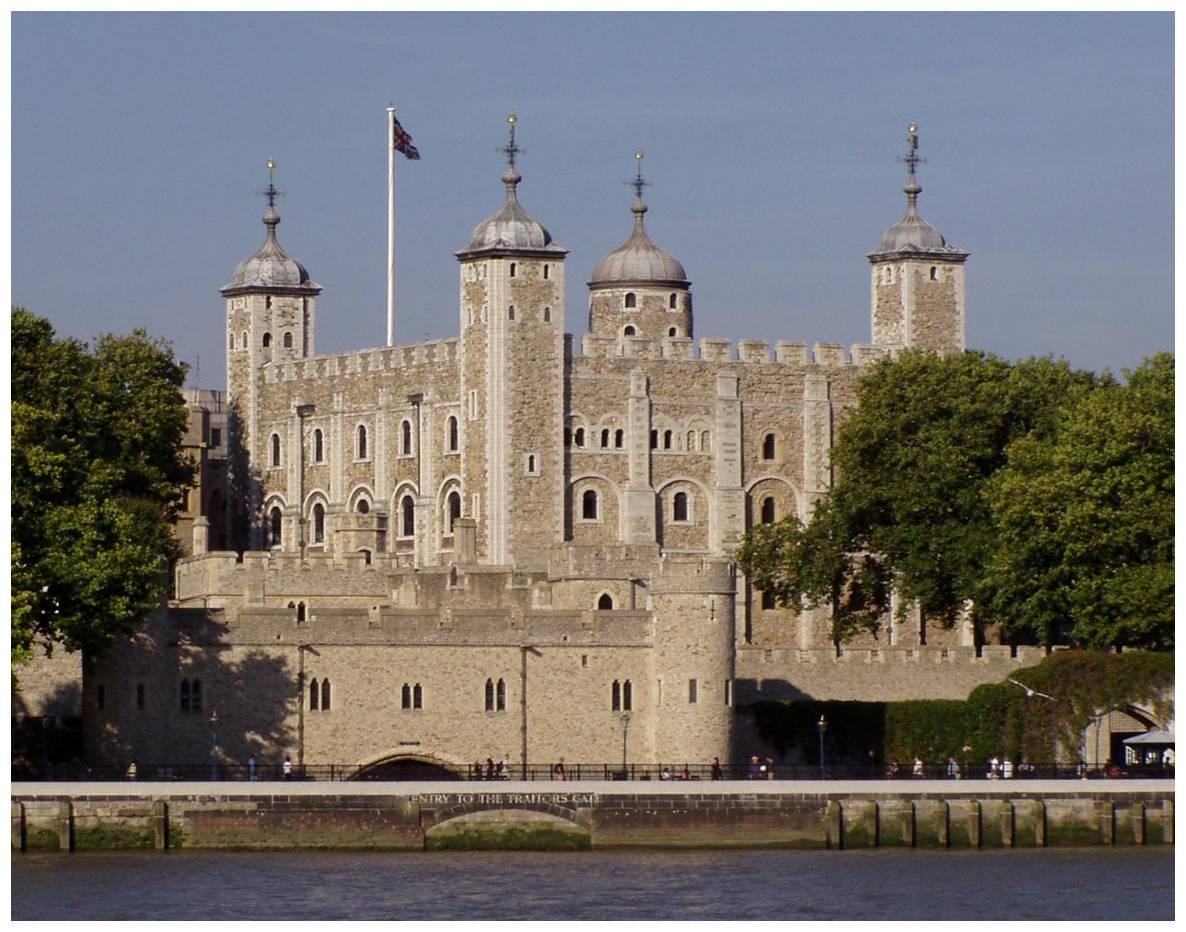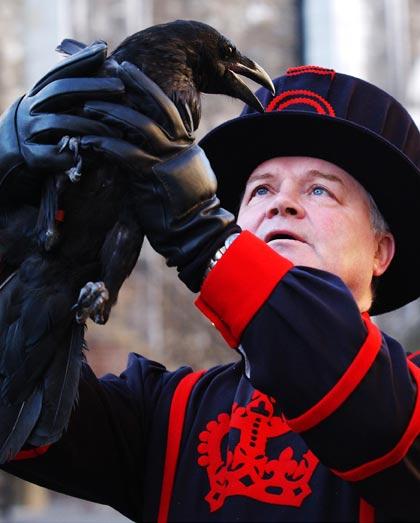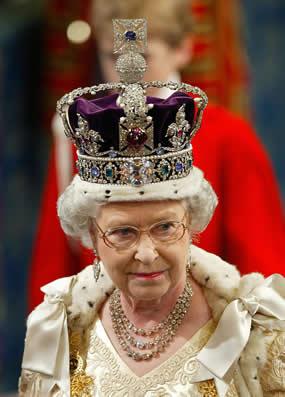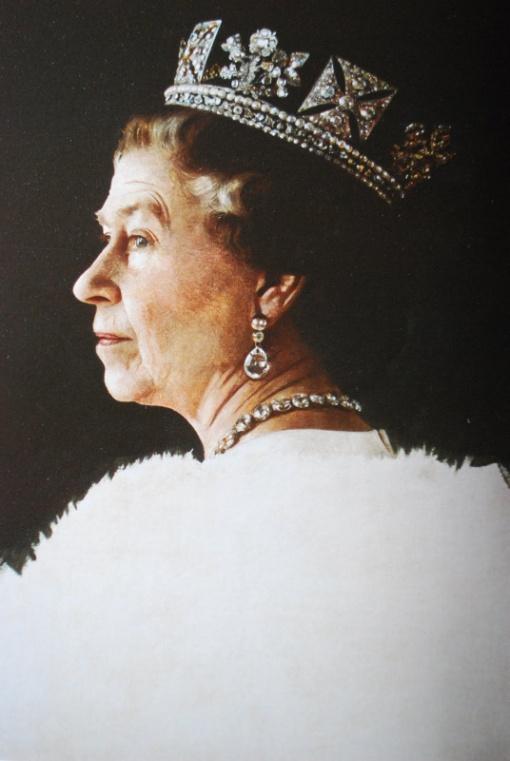The Tower of London
Introduction
- For over 900 years, the Tower of London has been standing guard over the capital. As a Royal Palace, fortress, prison, place of execution, arsenal, Royal Mint, Royal Zoo and jewel house, it has witnessed many great events in British history. Today the Tower of London houses the Crown Jewels and is open to the public as a museum.

History
- The Tower of London was originally built by William the Conqueror, following his successful invasion of England in 1066 (map of the Tower of London). The Tower of London is perhaps better known as a prison. The prisoners would be brought, via the river, from Westminster where they would have been tried and crowds would wait on the river bank to find out the verdict to see if they would be treated to the spectacle of a public execution. The executioner, with his long sharp axe would stand behind the accused on the boat. If the accused was guilty he would point his axe towards the victim and if not guilty he would point it away. People knew that if found guilty there would be a public execution 48 hours later.
The White Tower
- In the centre of the Tower of London is the famous White Tower (the White Tower interior). It is the oldest part of the fortress. The White Tower, which gives the entire castle its name, was built by William the Conqueror in 1078, and was a resented symbol of oppression, inflicted upon London by the new ruling elite.
The Bloody Tower
- The Bloody Tower (the Bloody Tower interior) as it is known, has been host to many famous executions and imprisonments. Many people were locked in the Tower, for religious beliefs or suspected treason. Famous prisoners have included Anne Boleyn, Edward the Fifth and The Duke of York, Catherine Howard, Lady Jane Grey, Sir Thomas More and others. For example, Elizabeth I was held prisoner in the Tower for two months by the order of her half sister, Queen Mary. Mary felt that her throne was being threatened by Elizabeth, so she imprisoned her in the Tower. Many Tudor's prisoners entered the Tower of London through the Traitors' Gate.
 The Yeomen Warders
The Yeomen Warders
- The responsibility for looking after the prisoners was given to the Yeomen Warders or Beefeaters. They originate from twelve Yeomen of the Guards, who were once private bodyguards of Henry VIII.
- The Yeomen Warders job title is «Yeoman Warder of Her Majesty's Royal Palace and Fortress the Tower of London, and Members of the Sovereign's Body Guard of the Yeoman Guard Extraordinary».
The Legend of the Ravens
- Ravens have lived at the Tower of London for hundreds of years. Legend has it that if the ravens ever leave the Tower of London the White Tower will crumble and a great disaster shall befall England. The ravens of the Tower of London are a group of captive Common Ravens which live in the Tower of London. The group of ravens at the Tower comprises at least seven individuals (six required, with a seventh in reserve). The presence of the ravens is traditionally believed to protect the Crown and the Tower; a superstition suggests that «If the Tower of London ravens are lost or fly away, the Crown will fall and Britain with it.»
The Tower's ravens cannot fly away because the flight feathers on one wing are kept clipped. With the single wing clipped, they can only fly for short distances to perch. This is more or less the only real hardship in their lives.
 The Crown Jewels
The Crown Jewels
The Crown Jewels are displayed at the Jewel House in the Tower of London and can be viewed there by the public.
The coronation of a new sovereign is one of the monarchy's most glittering pageants, staged in the gothic splendour of ancient Westminster Abbey, where every King and Queen of England, with the exception of Edward V and Edward VIII, has been crowned since King Harold II in 1066. This time honoured ritual emphasizes the continuity and majesty of the British monarchy.
The oldest items in the present coronation regalia date from the Restoration, when they were made for the coronation of King Charles II. The original Crown Jewels were destroyed by Oliver Cromwell following the execution of Charles I in 1649, as they were then considered to be redundant. In an appalling act of historical vandalism, Cromwell had the entire collection sold or melted down and made into coin.
- Many of these irreplaceable and historic pieces, collected over the centuries, were Saxon or Medieval and included Alfred the Great's State Crown and the eleventh century crown of Queen Edith, wife of Edward the Confessor. There is no certain depiction of the most precious item of the collection, the Crown of St.Edward the Confessor, (re-named King Alfred's crown after the Reformation). We know the appearance of the State Crown of Henry VII, which shared their fate, as it is depicted in some of the portraits Charles I, by Daniel Mytens and Van Dyck. There were also various sceptres, swords, coronets, rings and an Anglo-Saxon comb, Some of the pieces were probably reclaimed burial regalia, including those stripped from the rich shrine of Edward the Confessor in Westminster Abbey by Henry VIII. Various medieval garments used the Jewel House in past coronation ceremonies were also sold off at the time, an irreparable loss.
- The only item in the present collection to survive the Commonwealth is the golden Ampulla and spoon. The Ampulla is used in the coronation ceremony to anoint the monarch's head palms and breast with holy oil.
 The Imperial Crown of State contains the principal surviving historic jewels, which were recovered at the time of the Restoration. These include Edward the Confessor's sapphire, which is set in a Maltese cross at the top of the crown. This sapphire was once part of a ring owned by Edward the Confessor, which was buried with him in 1066. In 1101, when his shrine was opened and the ring removed, the sapphire was reset in a crown worn by Henry I.
The Imperial Crown of State contains the principal surviving historic jewels, which were recovered at the time of the Restoration. These include Edward the Confessor's sapphire, which is set in a Maltese cross at the top of the crown. This sapphire was once part of a ring owned by Edward the Confessor, which was buried with him in 1066. In 1101, when his shrine was opened and the ring removed, the sapphire was reset in a crown worn by Henry I.
The ruby which adorns the centre of the Crown of State has a rich and dramatic history. It once belonged to a King of Granada, who was murdered by Pedro the Cruel, King of Castille. He presented it to Edward, the Black Prince, in gratitude for his military assistance at the Battle of Navaretto in 1367. It was inherited by Edward's son, Richard II. Richard had it in his possession when he surrendered to his Elizabeth II is wearing the Imperial Crown of State cousin, the future Henry IV, at Flint, Wales in 1399. Henry later usurped the throne and Richard was murdered. Henry's son, Henry V, wore this ruby in the crown he wore around his helmet at the Battle of Agincourt, a bejewelled gold fleuron was struck off this same crown during the battle and lost. The ruby was similarly worn in the crown of Richard III at the Battle of Bosworth in 1485. When Richard was killed during the fighting it famously rolled under a hawthorn bush to be retrieved by Lord Stanley and placed on the head of the victorious Henry Tudor.
The Imperial Crown of State also contains pearls worn as earrings by Elizabeth I, these are suspended from the arches of the crown. Within the wide jewel encrusted band that forms the base of the Crown of State is mounted an enormous diamond, named the Second Star of Africa. This was cut from the famous Cullinan Diamond, the largest diamond ever mined, it was given to Edward VII, who had it set in the crown. This priceless crown contains in all 2,783 diamonds, 17 sapphires, 277 pearls, 11, emeralds and 5 rubies.
One of the most impressive of the crowns on display at the Tower of London is  Queen Mother’s Crown. This contains the legendary Koh-I-Noor, or Mountain of Light diamond. Indian in origin, its history can be traced to the thirteenth century. It was presented to Queen Victoria by the East India Company in 1850. A legend clings to it that it brings good luck to any woman that wears it, but disaster to any man and many of the men that have owned it have met a violent end.
Queen Mother’s Crown. This contains the legendary Koh-I-Noor, or Mountain of Light diamond. Indian in origin, its history can be traced to the thirteenth century. It was presented to Queen Victoria by the East India Company in 1850. A legend clings to it that it brings good luck to any woman that wears it, but disaster to any man and many of the men that have owned it have met a violent end.
- The George IV State Diadem was made for the coronation of George IV in 1820, designed to encircle the velvet cap worn by the king on his journey to Westminster Abbey.
The diadem was worn by Queen Victoria at her coronation, when it was reset with jewels to replace those hired by George IV. It is composed of four diamond pave set cross pattee alternating with four bouquets of rose, shamrock and thistle. The front cross pattee is set with a four carat canary coloured diamond. It was left by Queen Victoria in her will to the crown and is often worn by the present queen at the State Opening of Parliament.
The largest cut diamond in the world is contained in the Royal Sceptre with the Cross. Made of gold and three feet in length, it also contains an enormous amethyst and a superb emerald. There are several other sceptres contained in the Crown Jewels.
- The Orb, a golden globe topped by a diamond encrusted cross dates to 1661 for the coronation of Charles II and is symbolic of the Elizabeth II. The George IV State Diadem world ruled by Christianity, it is held in the monarch's left hand during the coronation ceremony. The jeweled cross which surmounts the orb reflects the monarch's title of Defender of the Faith.
A smaller orb was made in 1689 for the joint coronation of William III and Mary II.
- The jewels additionally contain five Swords of State, three of which are the Great Sword of State, the Sword of Justice and the Sword of Mercy, all of which are used in the coronation ceremony. They are traditionally carried before the monarch as he/she enters Westminster Abbey.
- The Armills are gold bracelets which are meant to symbolize sincerity and wisdom.
There are also maces, a Queens’s orb, sixteen silver state trumpets and a variety of banqueting plate used in the coronation ceremony, which also form part of this priceless and unique collection.
Colonel Blood and the theft of the Crown Jewels
- There has been one near successful attempt to steal the Crown Jewels, this took place in 1671 and was masterminded by Colonel Blood. Blood was an Irish adventurer, who already had several daring exploits to his discredit, one of which was a plot to seize Dublin Castle. At the time of the Restoration his lands had been confiscated, leaving him bitter and penniless.
Blood's plan commenced by making himself familiar to the Assistant Keeper of the Jewels, a seventy-six year old ex-soldier called Talbot Edwards who lived with his wife and family in the Martin Tower at the Tower of London. To supplement his wages, Talbot was allowed to show the jewels to visitors for a fee. Dressed convincingly as a parson, Blood came accompanied with a woman whom he addressed as his wife. She expressed a wish to see the crown and Edwards obliged. At this time the jewels were stored in a cupboard behind a wired grille in the Martin Tower. Having seen the jewels, the lady was seized with a violently upset stomach. This gained the pair admission to Edwards' private apartments, where the kindly Edwards lead them and allowed her to recuperate on a bed.
The 'parson' returned a few days later, bringing a gift of a pair of gloves as a gesture of thanks to Mrs Edwards, he was warmly received by the unsuspecting couple and invited to call again. The next time he did, Blood remarked that the Edwards had a daughter of marriageable age and raised the possibility that a marriage could be arranged between her and a nephew of his, whom, to whet their appetite, he added, was possessed of three hundred a year in land. The gullible Edwards' expressed themselves very interested and invited their visitor to come for dinner a few days later.
During his following visit, Blood piously said grace over the meal and expressed his admiration for a case of pistols, which he persuaded Edwards to sell to him. He arranged to return with the prospective husband on the morning of 9th May. He duly arrived on the appointed day, accompanied by his 'nephew' (in reality his son.) and two others, whom he introduced as friends. His wife would be arriving soon, he explained and in the meantime, to while away the time, he suggested that Edwards showed them the jewels. As Edwards reached the bottom of the stairs, he was overwhelmed and gagged. The old man struggled to free himself and made as much noise as he could. He was knocked about the head with a mallet, bravely, he continued to vigourously resist until one of the villains stabbed him in the stomach.
They then set to work removing the regalia from the cupboard and concealing them under their clothing. Blood himself crushed the crown to make it less conspicuous under his parson’s cloak. Just as it looked likely that their audacious plan was likely to succeed, Edwards' son returned unexpectedly and raised the alarm. The gang was captured as they tried to get away and all the jewels recovered.
- Edwards was promised a reward of two hundred pounds but never received it, the unfortunate man died of his wounds shortly after. Blood himself fared much better, King Charles II, intrigued by accounts of his exploits, wished to see the famous rogue. Disarmingly, he was never punished and was restored to his confiscated estates in Ireland, which lead to whispers that the merry monarch himself was involved in the plot in some underhand way. John Evelyn gathered that Colonel Blood had been taken into the Kings service as a spy.
